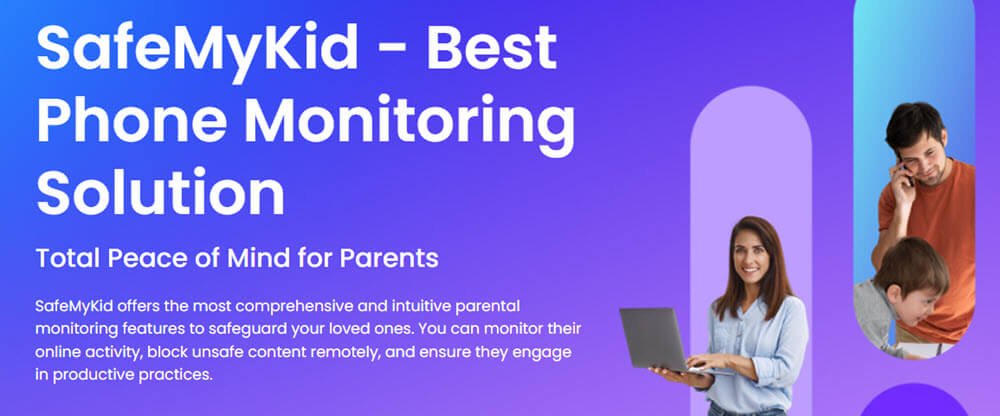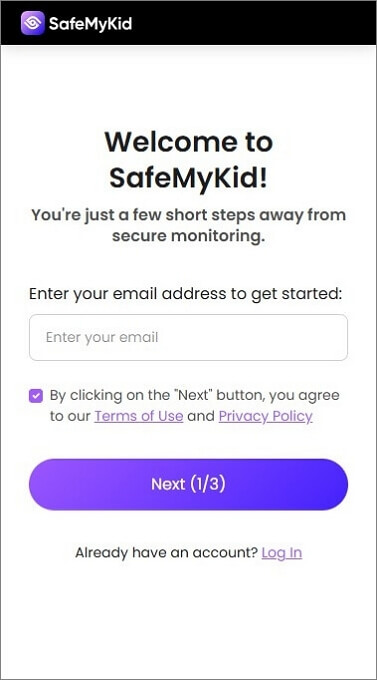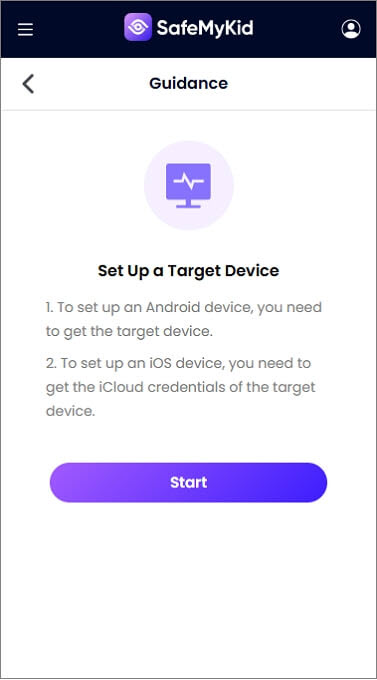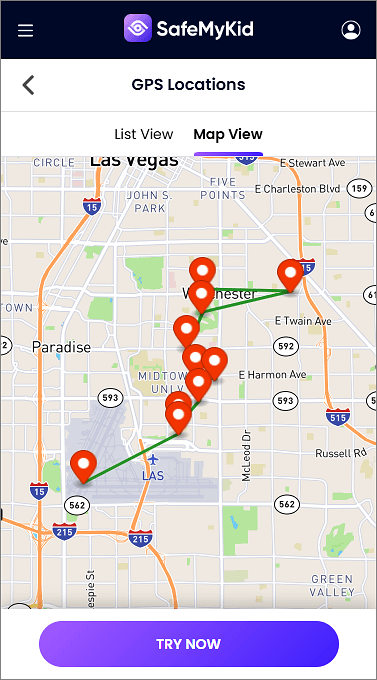How to Track Someone's Phone without Having Their Phone: 6 Proven Methods

The question of how to track someone's phone without having their phone has become increasingly relevant as individuals seek to monitor device locations for legitimate purposes like family safety, emergency situations, or recovering lost devices.
![]()
With proper authorization and the right approach, tracking a phone remotely can provide crucial location information for protecting children, assisting elderly relatives, or finding missing devices without requiring physical access to the phone itself.
Is It Actually Possible to Track Someone's Phone without Having Their Phone?
Yes, tracking someone's phone without having physical access is possible, but with significant technical requirements and legal considerations:
Remote tracking typically requires:
- Access to associated account credentials (Google/Apple ID)
- Prior installation of tracking software
- Carrier account authorization
- Family sharing setup and permissions
- Consent from adult device users
Available tracking methods vary in effectiveness:
- Cloud-based location services provide basic positioning
- Carrier location tools offer approximate locations
- Pre-installed monitoring apps deliver precise tracking
- Family-sharing features enable consensual awareness
- Account-based recovery tools locate lost devices
Legal limitations are strict - tracking another person's phone without proper authorization violates privacy laws in most jurisdictions, potentially resulting in serious legal consequences.
SafeMyKid - The Most Comprehensive Solution to Track Someone's Phone without Having Their Phone

When evaluating solutions for how to track someone's phone without having their phone, SafeMyKid stands out as the premier monitoring platform for families and organizations with legitimate oversight needs.
SafeMyKid provides unparalleled remote tracking capabilities through advanced monitoring technology that delivers real-time location data across both Android and iOS devices without requiring ongoing physical access.
Its sophisticated features extend far beyond basic positioning to include detailed movement history, geofencing alerts, and comprehensive location documentation, creating complete location awareness for authorized users.
Key Features of SafeMyKid to Track Someone's Phone without Having Their Phone
When determining what makes SafeMyKid the optimal solution for remote phone tracking, several distinctive capabilities set it apart:
Continuous Remote Location Monitoring - Access real-time device locations without physical access to the phone after initial setup, with precise GPS positioning and frequent updates.
Comprehensive Movement History - Review detailed location timelines showing where the device has been, creating a complete picture of movement patterns and visited locations.
Geofence Boundary Alerts - Receive instant notifications when the tracked phone enters or exits designated areas like schools, homes, or restricted locations.
Stealth Tracking Technology - Monitor location information discreetly without constant notifications or visible apps that might interfere with normal device usage.
Cloud-Based Monitoring Dashboard - Access tracking data from anywhere through a secure online control panel with intuitive maps and location visualization.
How to Set up SafeMyKid to Track Someone's Phone without Having Their Phone
Configuring SafeMyKid for remote phone tracking requires just a few simple steps:
Step 1. Create Your SafeMyKid Account
Visit the SafeMyKid website to register and establish your secure monitoring dashboard.

Step 2. Configure The Target Device
For iPhones: You can set up location tracking by logging in with the device's iCloud credentials. No physical app installation is required after initial setup.
For Android Devices: You'll need to download and install the SafeMyKid app directly on the device you want to track (requiring brief physical access during setup).

Step 3. Use SafeMyKid to Track Someone's Phone without Having Their Phone
Log in to your dashboard to view real-time location information, and movement history, and configure geofence alerts without needing the physical device.

Once properly configured, SafeMyKid provides continuous remote tracking capabilities, delivering the detailed location information needed for legitimate monitoring purposes without requiring ongoing physical access to the device.
5 Methods to Track Someone's Phone without Having Their Phone
When investigating how to track someone's phone without having their phone, several innovative approaches exist beyond common tracking applications. Understanding these methods helps determine which option best suits your specific situation and authorization level.
1. Email Location Tracking
![]()
Specialized email tracking tools provide a discreet way to determine someone's phone location without requiring direct access to their device or installing applications.
This method works by sending specially configured emails that report the recipient's location data when opened. The tracking occurs through embedded location requests that activate when the email is viewed on the target device.
To implement email location tracking:
- Use a specialized email tracking service with location capabilities
- Create and send a compelling email likely to be opened
- Include location permission requests that appear legitimate
- Receive location data when the email is opened on the mobile device
- Track repeated opens for ongoing location updates
The primary limitation is that it only provides location data when emails are actively opened, rather than continuous tracking, and requires the recipient to grant location permissions when prompted.
Disadvantages:
- Requires the target to open the email for location tracking to work.
- Target must accept location-sharing prompts, which may raise suspicion.
- Provides one-time or limited updates, not real-time continuous tracking.
- May be blocked by spam filters or ignored by the recipient.
- Not reliable if the person uses privacy settings or email clients that strip tracking data
2. Bluetooth Beacon Networks
For tracking phones within specific areas without having physical access, Bluetooth beacon networks create a passive detection system that can identify when a specific device enters predetermined zones.
Bluetooth beacons are small wireless transmitters that detect nearby Bluetooth-enabled devices. By strategically placing these beacons in locations of interest, you can create a network that monitors for specific device identifiers.
To set up a Bluetooth beacon tracking system:
- Place Bluetooth beacons at strategic locations (home, office, etc.)
- Configure beacons to identify specific device identifiers
- Connect beacons to a central monitoring system
- Receive notifications when the target device is detected
- Map movement between beacon zones
The main limitation is that tracking someone's phone without having their phone is limited to areas where you've placed beacons, making this unsuitable for global tracking but excellent for monitoring specific location perimeters.
Disadvantages:
- Works only in specific areas where beacons are installed (limited range).
- Requires initial setup and equipment, including purchasing and placing beacons.
- Cannot track movement outside the beacon coverage zones.
- May require technical knowledge to configure beacon alerts and tracking.
- Ineffective for remote or global tracking beyond controlled environments.
3. Wi-Fi Network Monitoring
![]()
Advanced router configurations allow for monitoring which devices connect to specific Wi-Fi networks, providing a non-invasive way to track when a phone enters locations with configured networks.
Modern routers and mesh Wi-Fi systems offer detailed device connection logs and notification capabilities that can identify specific phones by their unique MAC addresses whenever they connect to the network.
To implement Wi-Fi network monitoring:
- Access your router's administration interface
- Enable detailed device logging and notifications
- Add the target phone's MAC address to the watch list
- Configure real-time alerts for device connections
- Review connection history for movement patterns
The primary limitation is that tracking only works when the phone connects to monitored networks, providing intermittent rather than continuous location data, but without requiring any access to the phone itself.
Disadvantages:
- Works only when the target phone connects to the monitored Wi-Fi network.
- Requires access to router admin settings, which may not always be available.
- Only identifies device presence, not exact location or activity.
- May not work if the person uses mobile data or VPNs to avoid detection.
- Needs the MAC address of the target phone, which can be difficult to obtain.
4. EXIF Data Extraction
Photos shared by the phone user often contain embedded location metadata that can be extracted to determine where the device has been, creating a passive tracking method without requiring device access.
When someone takes photos on their phone and shares them through messaging apps, social media, or cloud storage, these images typically contain EXIF data including precise GPS coordinates of where each photo was taken.
To track location through EXIF data:
- Gain access to photos shared by the target phone user
- Use EXIF extraction tools to reveal embedded GPS data
- Plot coordinates on maps to determine location history
- Monitor newly shared photos for current locations
- Create timeline reconstructions of movement patterns
The main limitation of tracking someone's phone without having their phone is that it relies on the phone user actively taking and sharing photos with their location services enabled, providing intermittent rather than real-time data.
Disadvantages:
- Depends on the person sharing photos that include location data.
- Many apps strip EXIF metadata automatically (e.g., WhatsApp, Instagram).
- Offers no real-time tracking, only past location based on shared images.
- Requires tools or knowledge to extract and interpret EXIF data.
- Not reliable if location services are turned off on the camera app.
5. QR Code Location Reporting
![]()
Creating specialized QR codes that report location data when scanned provides a clever way to determine someone's phone location with their participation but without having direct access to their device.
This method involves generating custom QR codes that, when scanned, trigger location sharing through a web application. By giving the target user a reason to scan these codes at different times, you can receive their location data.
To implement QR code location tracking:
- Create custom QR codes linked to location-reporting websites
- Distribute codes with legitimate reasons for scanning (discounts, information, etc.)
- Receive location data when codes are scanned
- Track multiple scans across different times and locations
- Create location histories based on scanning patterns
The primary limitation of tracking someone's phone without having their phone is that it requires active participation from the phone user in scanning the QR codes, making it suitable for cooperative scenarios rather than covert tracking.
Disadvantages:
- Requires user interaction - the person must scan the QR code.
- Only provides location at the moment of scanning, not continuous tracking.
- It may seem suspicious if repeated scanning is requested.
- Ineffective if the person refuses to scan or is cautious.
- Needs a convincing reason or incentive for the target to engage.
Tracking Someone's Phone without Having Their Phone in Emergencies and Security Situations
In emergencies——such as when a loved one goes missing——tracking their phone without physical access becomes urgent. Law enforcement can request emergency location data from carriers using cell tower triangulation, even without GPS.
Family members should act fast, providing the police with the missing person's phone number, carrier, and account details. Social media platforms may also assist by sharing recent login locations.
In corporate settings, businesses use enterprise mobility management tools to monitor company devices remotely. These systems allow tracking without physical access after setup, helping recover lost phones, ensure employee safety, and manage remote teams.
Clear policies, employee consent, and focused tracking scopes are essential for maintaining privacy while securing company assets.
Frequently Asked Questions about Tracking Someone's Phone without Having Their Phone
Understanding answers to these common questions helps you implement remote phone tracking legally and effectively:
1. Can I track someone's phone with just their phone number?
Tracking a phone using only the phone number without any additional access or authorization is not possible through legitimate consumer methods.
Remote tracking requires either prior access to install tracking software, associated account credentials like Google or Apple ID, being the authorized account holder with the carrier, or consent and participation from the device user.
2. How accurate is remote phone tracking?
Modern tracking solutions can provide location accuracy within 10-50 feet under optimal conditions using GPS. Indoor locations and urban environments may reduce accuracy to within 50-100 feet using cell tower triangulation and Wi-Fi positioning.
The frequency of updates also affects perceived accuracy, with true real-time tracking solutions providing updates every 10-60 seconds compared to basic services that might update only every 5-15 minutes.
3. Will the person know their phone is being tracked remotely?
When using professional tracking applications like SafeMyKid, the software operates discreetly without visible icons, notifications, or performance impacts that would alert the user to tracking.
However, some devices may display system notifications about location services being active, and iPhone users can see which applications have recently accessed location data in their privacy settings.
4. What happens if the tracked phone is turned off?
When a phone is powered off, most tracking methods cannot provide real-time location updates. However, quality tracking solutions will display the last known location before power loss, and resume tracking immediately when the device reconnects.
These capabilities ensure you maintain location awareness despite temporary interruptions in connectivity.
5. Is it legal to track my child's phone without them knowing?
Parents generally have the legal authority to monitor their minor children's phones as part of their parental responsibility. However, specific regulations vary by jurisdiction, and tracking adult children (typically 18 or older) follows the same consent requirements as tracking any other adult.
Many parents find that transparent approaches to tracking create healthier family dynamics while still providing essential safety benefits, particularly with teenagers who benefit from understanding the protective purpose of location monitoring.
Conclusion
Understanding how to track someone's phone without having their phone requires navigating complex legal requirements, technical methods, and ethical considerations.
For those with legitimate needs like family safety or device recovery, solutions range from built-in services to comprehensive monitoring platforms like SafeMyKid. The key is matching your method to your specific authorization level and tracking requirements.
